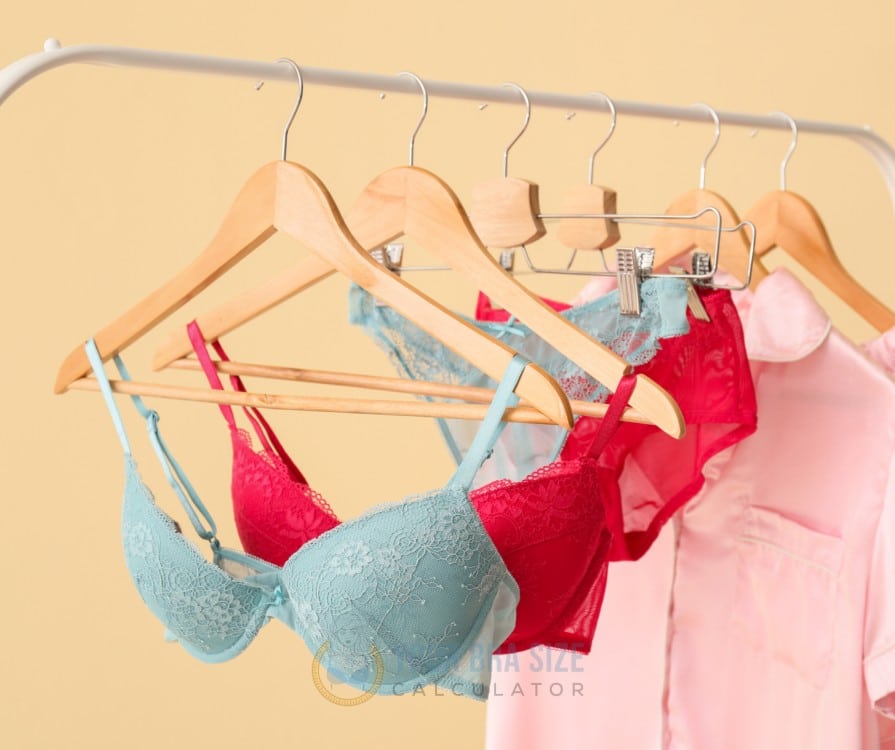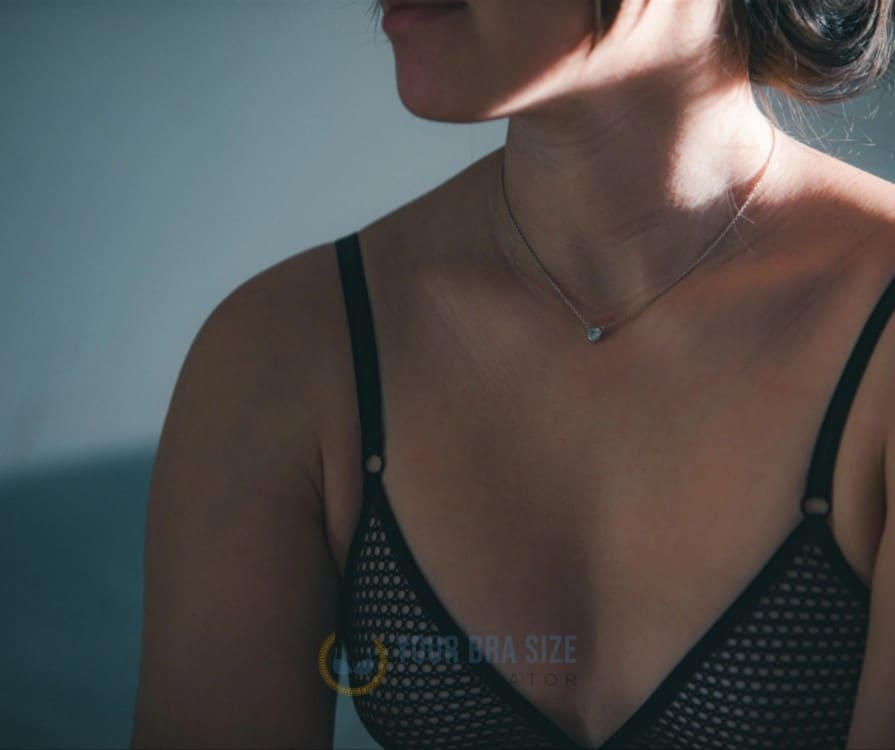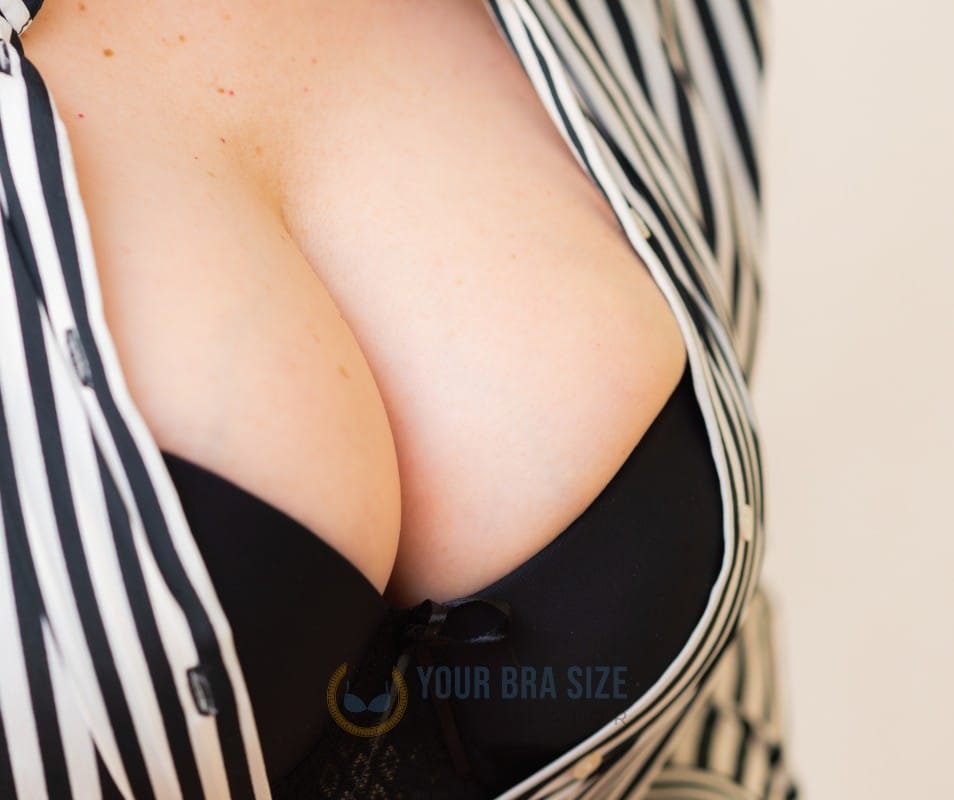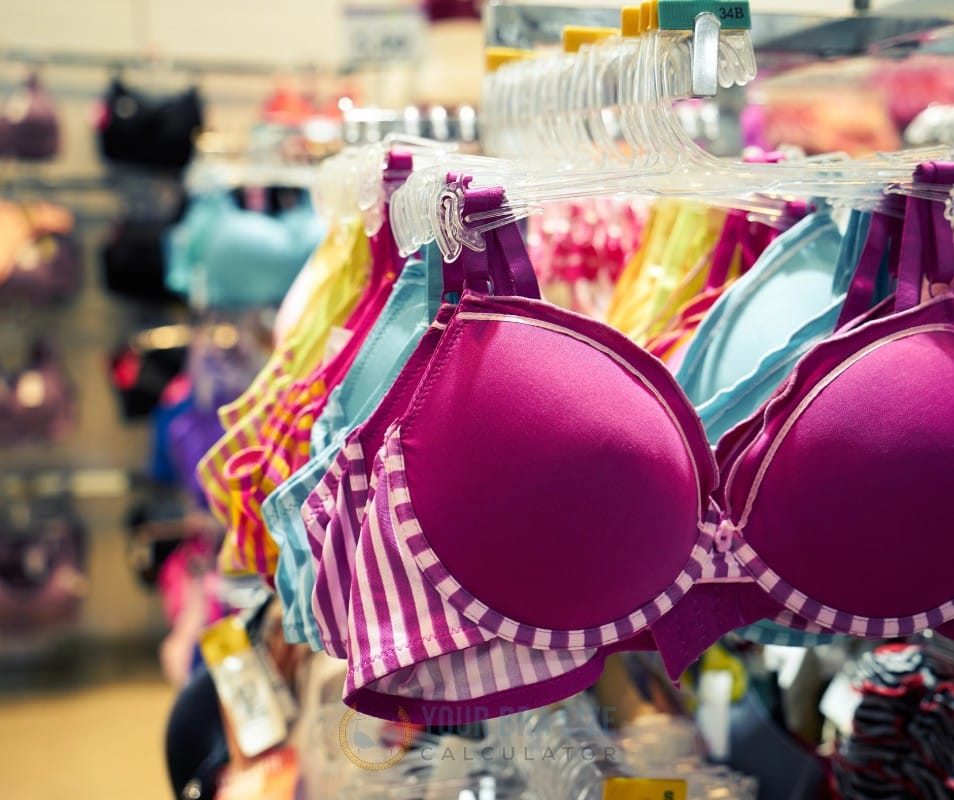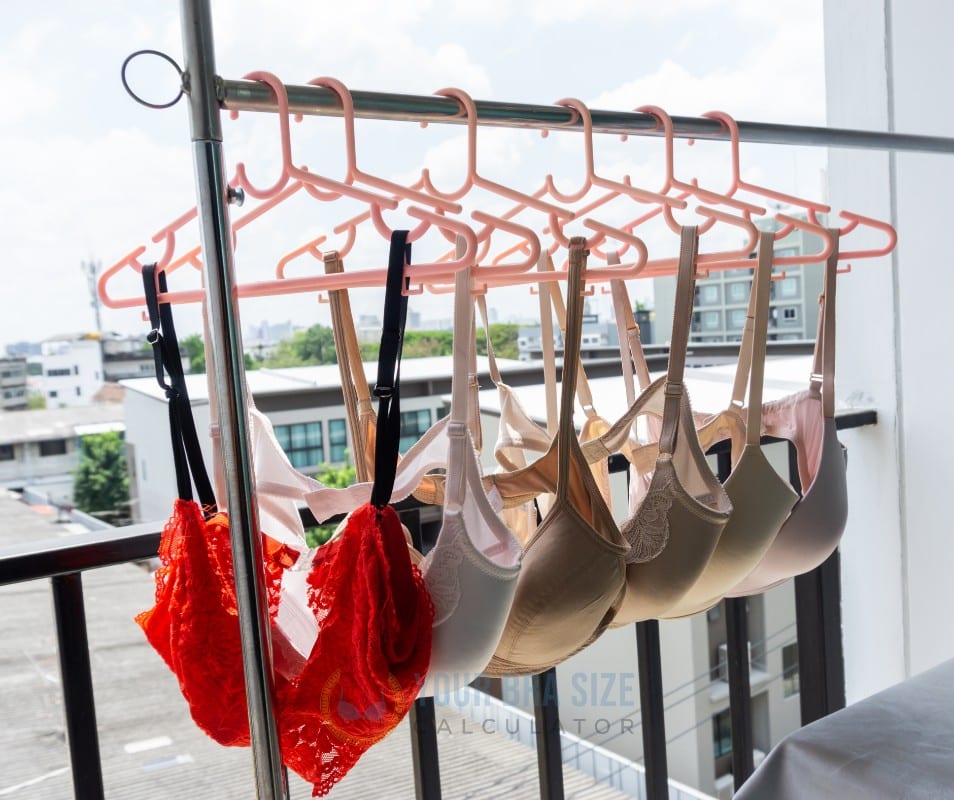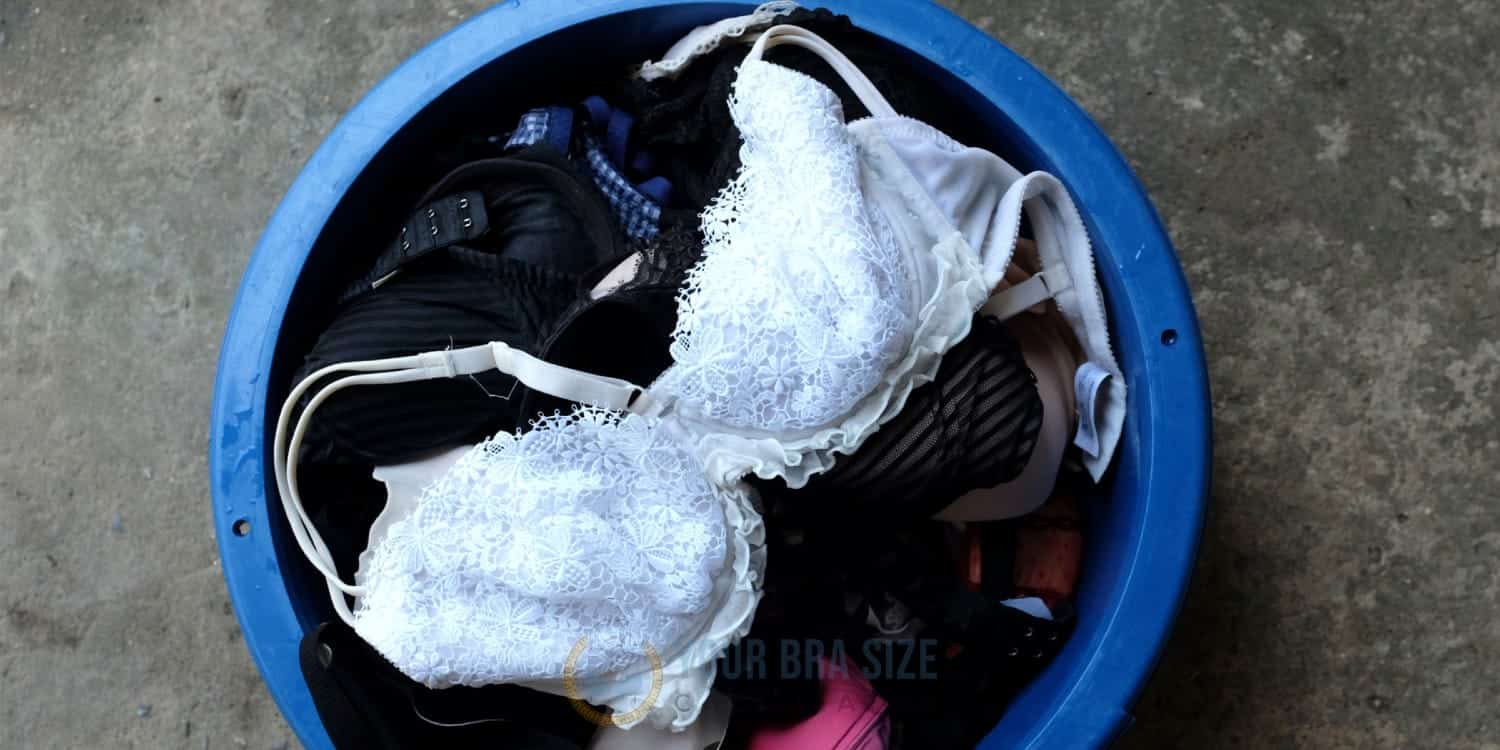Bras are highly technical garments with complicated sizing. For example, a woman who wears a 32G cup isn’t necessarily an actual G cup, which is confusing, right? But stay with us—we’ll explain how bra sizes work in just a bit. It’s no wonder 80 percent of women wear the wrong size when their cup letter doesn’t directly translate to their cup volume. See why your measured bra size may not be your actual bra size.
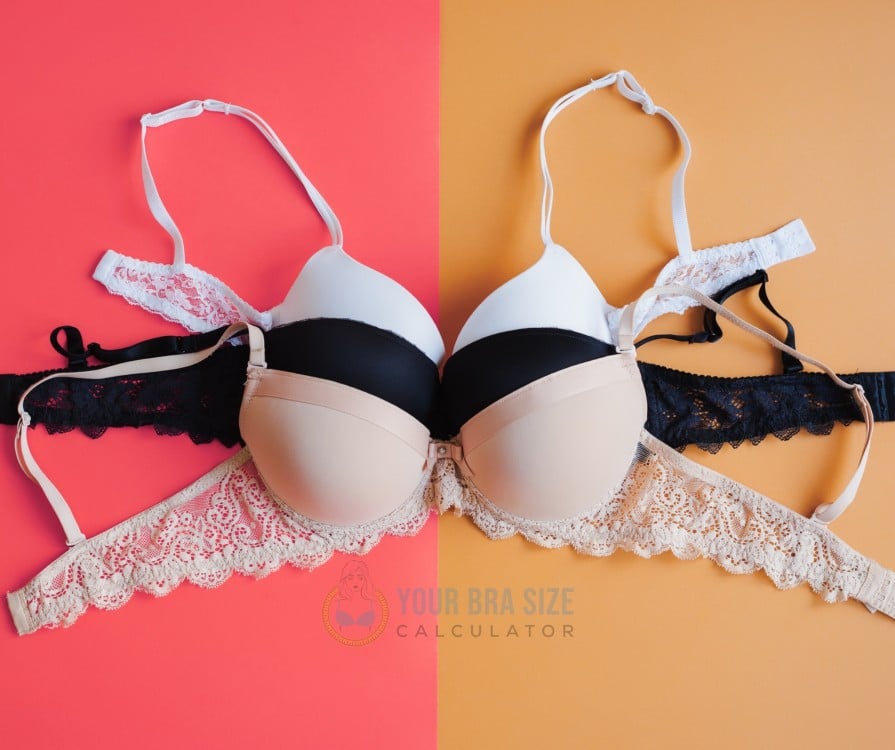
Key Highlights
- Bra sizes are determined by measuring the band size (number) and cup size (letter).
- Cup sizes do not directly correlate to the actual volume of the breasts.
- Understanding sister sizes can help you find a better-fitting bra.
- Measuring your band and cup sizes accurately is important to find the perfect fit.
- Different bra styles and types may require different sizing.
- Wearing the wrong bra size can lead to discomfort and health issues.
Understanding the Basics of Bra Sizing
To understand bra sizing, it’s essential to know the basics. Bra size measurements are calculated based on two key measurements: the band size and the cup size. The band size, also known as the underbust measurement, refers to the measurement around the ribcage, just below the breasts. This measurement determines the number of parts of the bra size. On the other hand, the cup size refers to measuring the fullest part of the breasts and the ribcage, also known as the bust size. This measurement represents the difference between the underbust measurement and the measurement around the fullest part of the bust. It determines the letter part of the bra size. The band and cup size combination determines the overall bra size, such as 32D or 36C.
The Significance of Band and Cup Sizes
The band size and cup size are crucial in finding the right bra fit. The band measurement provides the majority of the support, while the cup volume determines the size of the bra cup. The band should fit snugly around the rib cage, giving support without digging into the skin. The cup size should encompass the fullest part of the breasts, including the area under the armpit and the nipple, ensuring proper coverage and a comfortable fit. It’s important to note that the band measurement and cup volume are not independent. For example, a larger band size may require a larger cup size to maintain the same volume. Understanding the significance of band measurement and cup volume is essential to finding a bra that fits well and provides the necessary support.
Deciphering the Numbers and Letters
Deciphering bra sizes can be confusing, especially when it comes to the combination of numbers and letters. Here’s a breakdown of how the numbers and letters in bra sizes work:
- Band Size: The number of parts of the bra size indicates the band size, which is the measurement around the rib cage. Standard band sizes range from 28 to 56, with the most commonly produced sizes being 32-42 in the United States. Band sizes are usually even numbers, but if you measure an odd number, it’s recommended to round up to the following even number.
- Cup Letter: The letter part of the bra size indicates the cup size, which refers to the volume of the bra cup. Cup sizes in the United States range from A to N, with more giant letters corresponding to larger cup volumes. It’s important to note that cup volume changes depending on the band size. For example, a 34D cup volume differs from a 38D cup volume. This is where sister sizes come into play.
- Sister Sizes: Sister sizes are bra sizes with the same cup volume but different band sizes. For example, a 34C and a 32D have the same cup volume. If the cups fit comfortably but the band size is too loose, try a smaller band size with a larger cup size to maintain the same cup volume.
The Evolution of Bra Size Measurement
Over the years, the measurement and sizing of bras have evolved. In the past, women didn’t wear bras but instead relied on corsets for support and shaping. The concept of a divided corset and the term “brassiere” emerged in the late 1800s. The first modern bra with an underwire/frame support system was patented in 1914. Since then, various innovations have been made to improve the sizing and fit of bras. Today, bra sizing involves the use of measuring tapes and standardized charts to determine the band and cup sizes that best fit an individual’s body, including the size and shape of their boobs.
Historical Perspective on Measuring Techniques
The measurement techniques used for bra sizing have varied across countries and periods. In the United States, the band size is typically measured in inches. In contrast, it is measured in centimeters in the United Kingdom (UK). The cup sizes also differ, with the United States using letters A to N, while the UK uses letters A to K. In Australia, the band and cup sizes follow a similar metric system as European brands, with a 2 cm increase per cup size. In Italy, band sizes are numbered using a 1, 2, and 3 system, while cup sizes are denoted by letters A to F. These variations in measurement techniques can sometimes lead to clarity and consistency when shopping for bras internationally. Knowing these differences and referring to specific sizing charts for accurate measurements is essential.
Innovations in Bra Size Measurement Over Time
Innovations in bra size measurement have been made to improve the accuracy and fit of bras. One such innovation is using measuring tapes to determine precise band and cup sizes. This allows for more personalized sizing and ensures a better fit. Additionally, technological advancements have led to the development of new bra styles and designs that cater to different body shapes and sizes. These innovations have made it easier for individuals to find support and comfort bras.
How to Accurately Determine Your Bra Size
Determining your bra size is essential for finding a bra that fits well and provides the necessary support. Here are some steps to help you measure your bra size accurately:
- To determine your band size, use a soft measuring tape around your rib cage, just below your breasts, and round this measurement to the nearest whole number.
- Measure around the fullest part of your bust to determine your cup size. Subtract your band size measurement from this measurement to find your cup size.
- Refer to a bra size chart to find the corresponding band and cup size.
It’s important to note that measuring techniques may vary slightly depending on the brand, so always refer to specific sizing guidelines provided by the manufacturer.
Step-by-Step Guide to Measuring at Home
Measuring your bra size at home can be done with simple steps. Here’s a step-by-step guide to help you measure accurately:
- Wrap a soft measuring tape around your rib cage, just below your breasts, to determine your band size. Ensure the tape measure is parallel to the ground and snug but not too tight around this measurement to the nearest whole number.
- Measure around the fullest part of your bust, ensuring the tape measure is parallel to the ground. Subtract your band size measurement from this measurement to find your cup size.
- Refer to a bra size chart to find your corresponding band and cup size.
Remember to measure in inches or centimeters, depending on the sizing system used in your country, and consistently round to the nearest whole number for band size.
The Role of Professional Fittings
While measuring your bra size at home can be helpful, it’s also essential to consider the role of professional fittings. Professional fitters are trained to measure and assess bra fit accurately, considering factors such as breast shape and individual preferences. They can provide valuable guidance and recommendations to help you find the perfect fit, including options such as breast implants. Professional fittings can be especially beneficial for individuals with unique bra fit challenges, such as those with asymmetrical breasts or post-mastectomy. It’s recommended to schedule a professional fitting to ensure you wear the correct bra size and enhance your overall bra shopping experience.
Common Misconceptions About Bra Sizing
Several everyday things could be improved about bra sizing, which can lead to wearing the wrong size bra. Here are a few misconceptions to be aware of:
- Cup size is not directly correlated to breast size. Different band sizes, known as sister sizes, can have the same cup volume.
- Sister sizes are bras with the same cup volume but different band sizes. Understanding sister sizes can help you find a better-fitting bra.
- Wearing a larger cup size does not necessarily mean you have larger breasts. Cup size is relative to band size, and it’s essential to consider both measurements when determining your bra size.
Myth vs. Reality in Bra Sizes
There are several myths and misconceptions surrounding bra sizes that can lead to confusion. Here’s a comparison of some common myths and the reality of bra sizing:
- Myth: A D cup is large. Reality: Cup size is relative to band size, so a D cup on a smaller band size may be smaller than it seems.
- Myth: DD is the largest cup size. Reality: Cup sizes can go beyond DD, and the lettering increases as the volume rises.
- Myth: Smaller band sizes always have smaller cup sizes. Reality: Sister sizes allow different band sizes to have the same cup volume, so a smaller band may still have a larger cup size.
Understanding the reality behind these myths can help you find the right bra size and dispel any misconceptions about bra sizing.
The Impact of Incorrect Bra Size on Health
Wearing the wrong bra size can hurt both comfort and breast health. Here are a few ways in which an incorrect bra size can affect your health:
- Shoulder and Neck Pain: Ill-fitting bras can strain the shoulders and neck, leading to pain and discomfort.
- Back Pain: A bra with an incorrect band size can fail to provide adequate support, leading to back pain.
- Breast Discomfort: Cups that are too small or too large can cause breast discomfort, including chafing, rubbing, or compression.
- Restricted Lymphatic Flow: Too tight a bra can restrict lymphatic flow, potentially leading to fluid buildup and discomfort.
Wearing the correct bra size is essential to ensure optimal comfort and support for your physical and breast health.
The Science Behind Cup Sizes
The science behind cup sizes involves understanding the relationship between breast size and cup volume. The difference between the band size and the bust measurement determines cup size. For every inch of difference, the cup size increases. However, cup size is not an exact indicator of breast size, as it is relative to band size. Cup volume refers to the space the bra cup can accommodate, varying depending on the band size. Understanding the science behind cup sizes helps find the right fit and ensure optimal support.
Understanding Different Cup Sizes and What They Mean
Cup sizes are essential to bra sizing and come in a range of letters, from A to N. The cup size represents the volume of the bra cup and is relative to the band size. For example, a 34B may have the same cup volume as a 30D or a 32C. This is known as sister sizing, where different band sizes are paired with the same cup volume, making it easier for online shopping and finding the perfect fit. The cup size, also known as the size of the breasts, is determined by measuring the difference between the bust and underbust circumference, providing a more accurate and personalized fit. Understanding different cup sizes and their meaning is crucial for finding the perfect fit for your body.
It’s important to note that cup sizes alone do not indicate the shape or fullness of breasts. Breast shape plays a significant role in finding the right bra fit. Some standard cup sizes include A, B, C, D, and DD, representing increased cup volume. However, cup size alone is insufficient to determine the perfect fit, as breast shape and fullness also need to be considered. Understanding different cup sizes, such as the DD cup size, is crucial in finding the right bra fit for women of all shapes and sizes. Additionally, cup sizes are measured in alphabetical order, with the alphabet representing the increase in cup volume. This means that as the letter goes further down the alphabet, the cup size increases in volume, starting with AA as the smallest.
How Cup Sizes Vary Across Different Brands
Cup sizes vary across brands, so consider brand-specific sizing when shopping for bras. While the cup size letters remain the same, the actual cup volume may differ. This means that a C cup in one brand may be equivalent to a different cup size in another, highlighting the importance of finding the right style bra for your body shape and ensuring a comfortable fit for the wearer.
To illustrate the variations in cup sizes across different brands, refer to the table below:
|
Brand A |
Brand B |
Brand C |
|
32B |
32C |
32D |
|
34B |
34C |
34D |
|
36B |
36C |
36D |
When shopping online, it is essential to refer to each brand’s sizing chart and customer reviews to determine the best fit for you. Many online retailers, like ThirdLove, provide personalized sizing tools to help you find the perfect bra size and style based on your unique measurements and preferences.
Conclusion
Understanding the intricacies of bra sizing, especially the significance of band and cup sizes, is crucial for a comfortable and supportive fit. The evolution of bra size measurement has seen innovations over time, emphasizing the importance of accurate measurements. By knowing how to determine your bra size accurately, you can avoid common misconceptions and the potential health impacts of wearing the wrong size. Delve into the science behind cup sizes to comprehend their variations across brands. Embrace professional fittings and debunk myths to ensure your undergarments provide the comfort and support your body deserves.
Frequently Asked Questions
Why Do Bra Sizes Include Cups?
Bra sizes include cups to provide support and encapsulation for the breasts. The cup size indicates the bra cup’s volume, which helps shape and support the breasts. Different cup sizes cater to varying breast sizes, ensuring a comfortable and secure fit.
How Often Should I Get Measured for a Bra?
It is recommended to get measured for a bra every six months to a year or whenever there are significant changes in your body, such as weight loss or gain, pregnancy, or hormonal changes. Regular measurements help ensure you wear the correct bra size and achieve the perfect fit for optimal comfort and support.
Can Bra Sizes Change Over Time?
Bra sizes can change over time due to various factors such as weight fluctuations, hormonal changes, and pregnancy. Weight gain or loss can affect breast size. At the same time, hormonal changes during puberty, menstruation, and menopause can also impact breast size and shape. It is essential to regularly assess and measure your bra size to ensure a proper fit.
Why are cup sizes called cups?
The term “cup size” in bra sizing refers to the volume of the bra cup, similar to the concept of a cup that holds liquid. The use of letters (A, B, C, etc.) to denote cup sizes originated in the early 20th century and has become a standard naming convention in the lingerie industry.
Are there any cultural or societal reasons for measuring bra sizes in cups?
The measurement of bra sizes in cups is primarily a standardized system used in the lingerie industry. While cultural and societal differences may influence preferences and perceptions of breast size, cup sizes provide a universal method for determining bra fit and support across different brands and regions.

